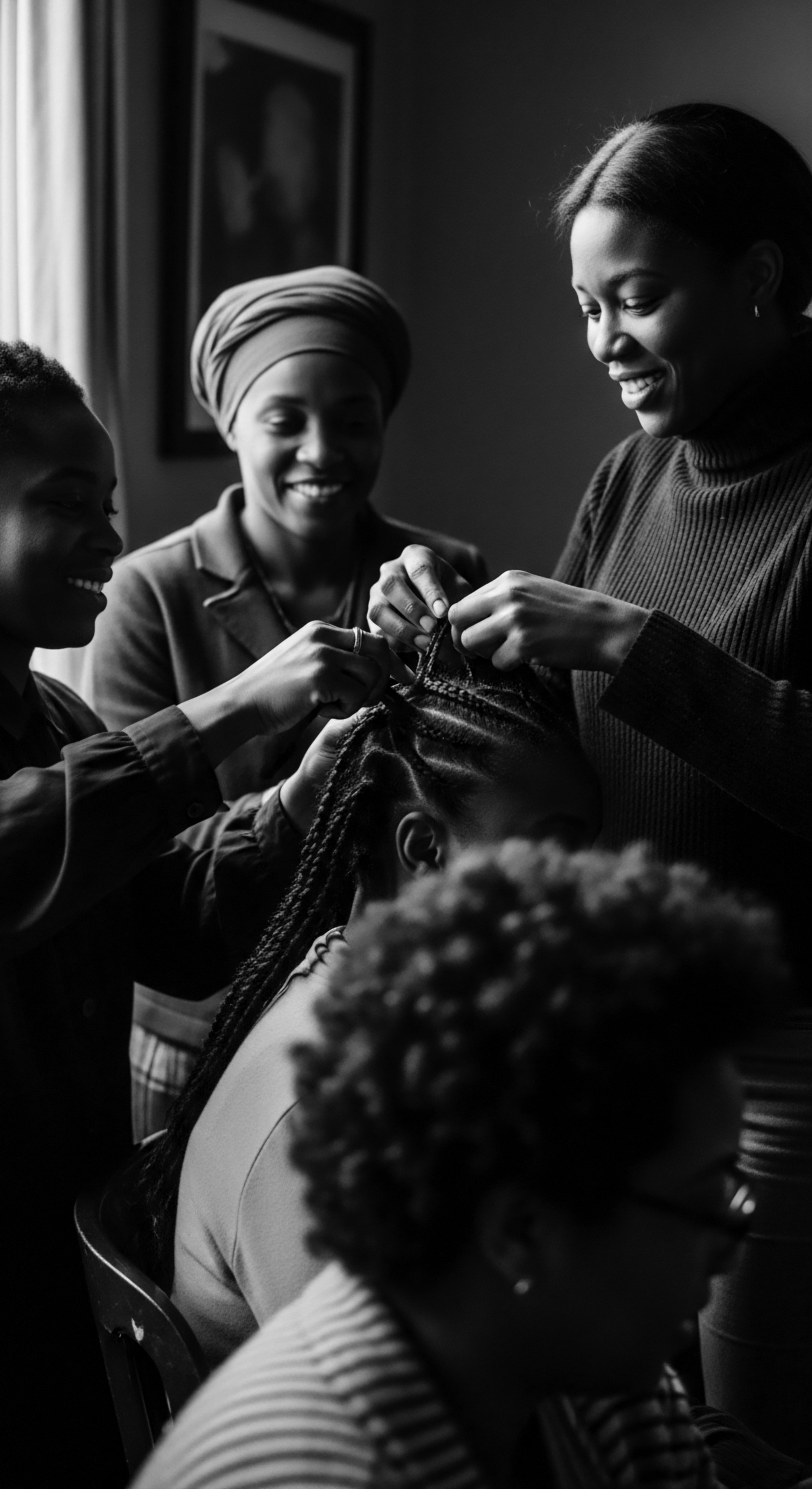
Fundamentals
The very notion of Lipid Replenishment, when viewed through the profound lens of Roothea’s ‘living library,’ transcends mere scientific terminology. It speaks to an elemental truth about hair, particularly the gloriously varied strands that grace the heads of those with textured tresses. At its most straightforward, this process involves restoring the natural oils and fatty compounds that form a protective, nourishing layer on the hair shaft and scalp.
These lipids, a diverse family of organic molecules, are the hair’s innate guardians, providing a supple strength and a resilient sheen. Their presence ensures the integrity of the cuticle, the outermost layer of the hair, allowing it to lie smoothly and reflect light, conveying a vibrant appearance.
Consider the hair strand not merely as a collection of cells, but as a living testament to ancestral resilience, each coil and curve holding echoes of journeys through time. The lipids are its very breath, its sustained nourishment. Without adequate lipid presence, the hair can feel brittle, susceptible to breakage, and lacking in its inherent vitality. This fundamental concept of re-establishing balance is not a contemporary discovery; rather, it resonates with ancient practices of care, passed down through generations.
Lipid Replenishment fundamentally means restoring hair’s natural oils and fatty compounds, essential for its strength, vitality, and protective integrity, a concept deeply rooted in ancestral hair care wisdom.
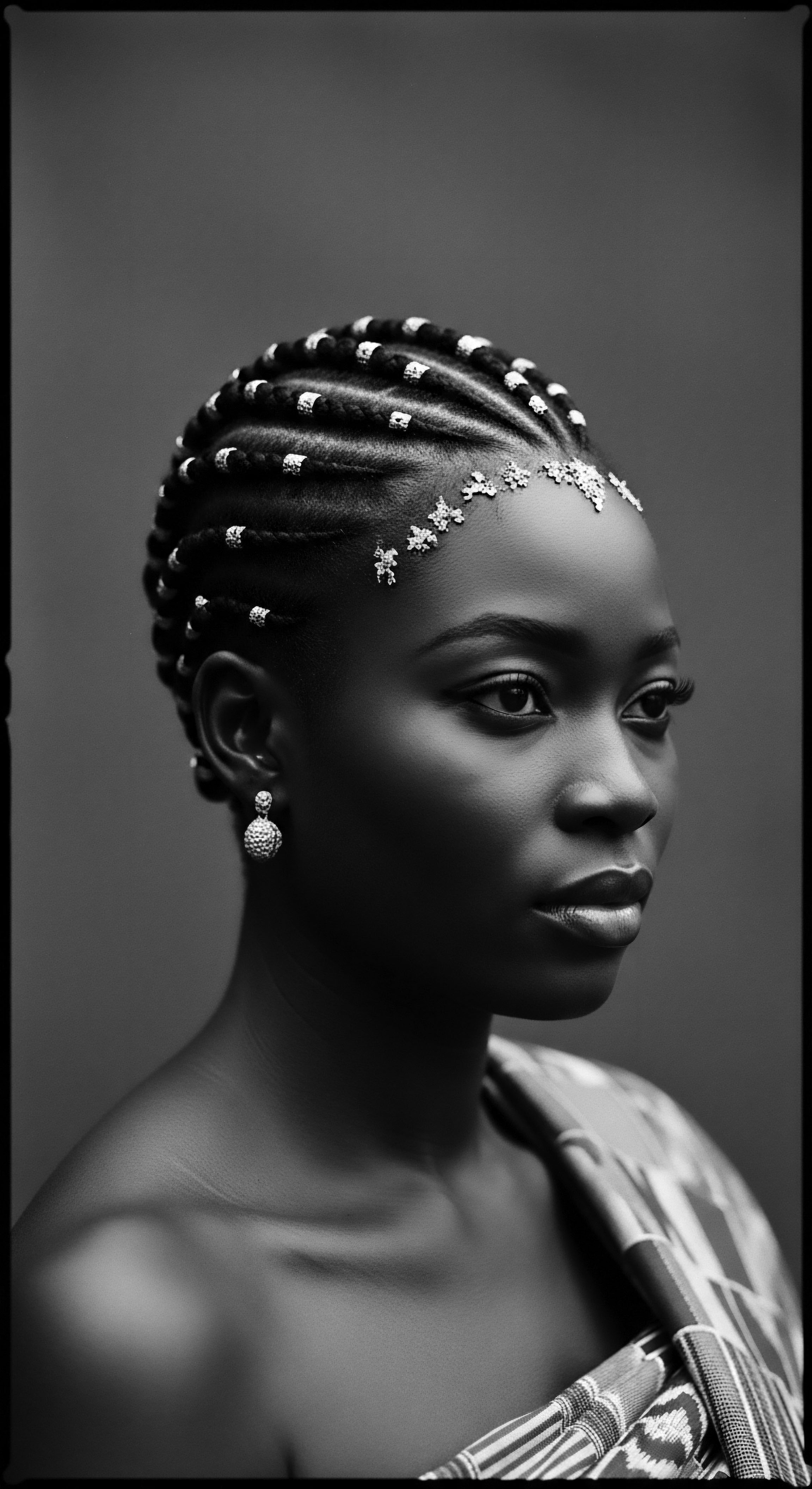
The Hair’s Intrinsic Shield
Within the complex architecture of a single hair strand, lipids play a silent yet powerful role. They exist both within the hair’s inner structure, contributing to its flexibility and internal moisture balance, and as a surface layer, the natural sebum produced by the scalp. This external coating forms a crucial barrier against environmental stressors, from the harsh sun to the friction of daily life.
For textured hair, with its unique structural characteristics – the elliptical shape of the strand, the varied curl patterns, and the often slower migration of natural oils down the shaft – this protective lipid layer holds even greater significance. The natural twists and turns of coily and curly hair can create points of vulnerability where the cuticle may lift, making it more prone to moisture loss and damage.
Understanding this basic physiological need for lipids brings into focus the ancestral wisdom that instinctively understood the hair’s hunger for rich, restorative emollients. Generations prior to modern laboratories intuitively grasped the concept of replenishment, even if they lacked the precise molecular language to articulate it. Their methods, honed through observation and tradition, were direct applications of this foundational principle.
- Sebum ❉ The scalp’s natural oil, composed of triglycerides, waxes, squalene, and fatty acids, provides the initial lipid coating for hair, safeguarding against moisture evaporation.
- Ceramides ❉ Complex lipids found within the hair’s cuticle, acting as a natural ‘cement’ that binds the cuticle scales together, contributing to the hair’s structural integrity and ability to retain moisture.
- Fatty Acids ❉ Components of many natural oils, these organic compounds nourish the hair, imparting softness and flexibility, and supporting the scalp’s delicate ecosystem.
The recognition of these elemental components within hair science simply validates the long-held beliefs in the restorative properties of natural substances. The foundational explanation of Lipid Replenishment, therefore, begins not with a chemical formula, but with the profound, intuitive understanding of hair’s inherent need for oil and fat, a need met for centuries through the bounty of the earth and the hands of diligent caretakers.
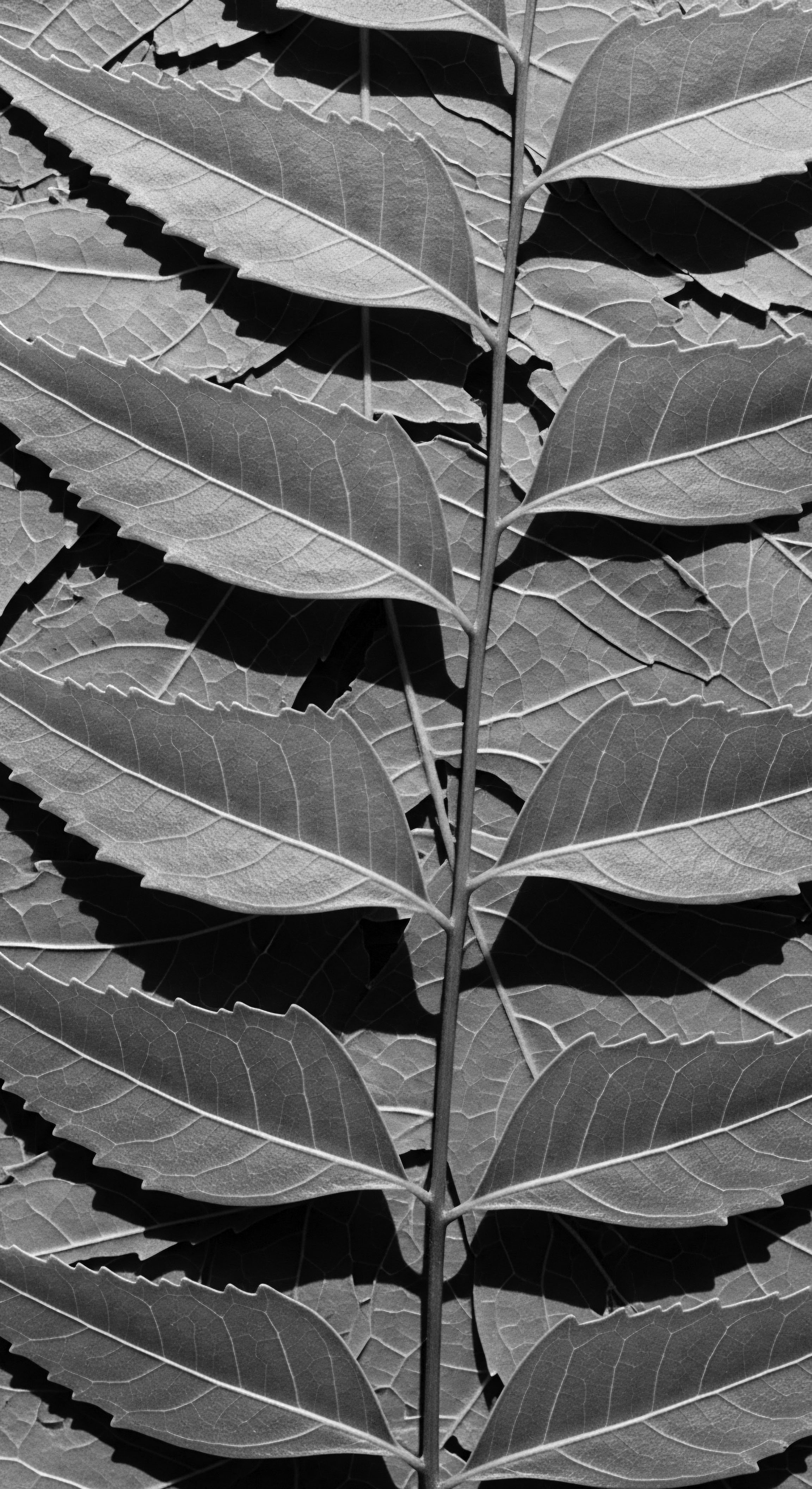
Intermediate
Stepping beyond the elemental, an intermediate understanding of Lipid Replenishment delves into the diverse array of lipids and their specific roles in preserving the vitality of textured hair. This deeper exploration reveals a sophisticated interplay between the hair’s natural composition and the external agents applied, reflecting a continuum of care that spans generations and geographies. The hair’s lipid profile is not static; it is influenced by genetics, environment, and daily practices. For textured hair, the inherent architecture, characterized by a more open cuticle structure in some areas and a greater propensity for tangling, necessitates a consistent and thoughtful approach to lipid maintenance.
The distinction between internal and external lipids becomes more apparent at this level of understanding. Internal lipids, like ceramides, cholesterol, and 18-methyl eicosanoic acid (18-MEA), are integral components of the hair’s cellular membrane complex, providing structural cohesion and flexibility. Their depletion, often a consequence of chemical processing, excessive heat styling, or even aggressive detangling, leads to significant damage, manifesting as increased porosity and brittleness.
External lipids, primarily sebum and applied oils, coat the hair shaft, acting as a sealant and imparting a smooth, protective surface. The strategic replenishment of both types, through various means, becomes a cornerstone of holistic textured hair care.
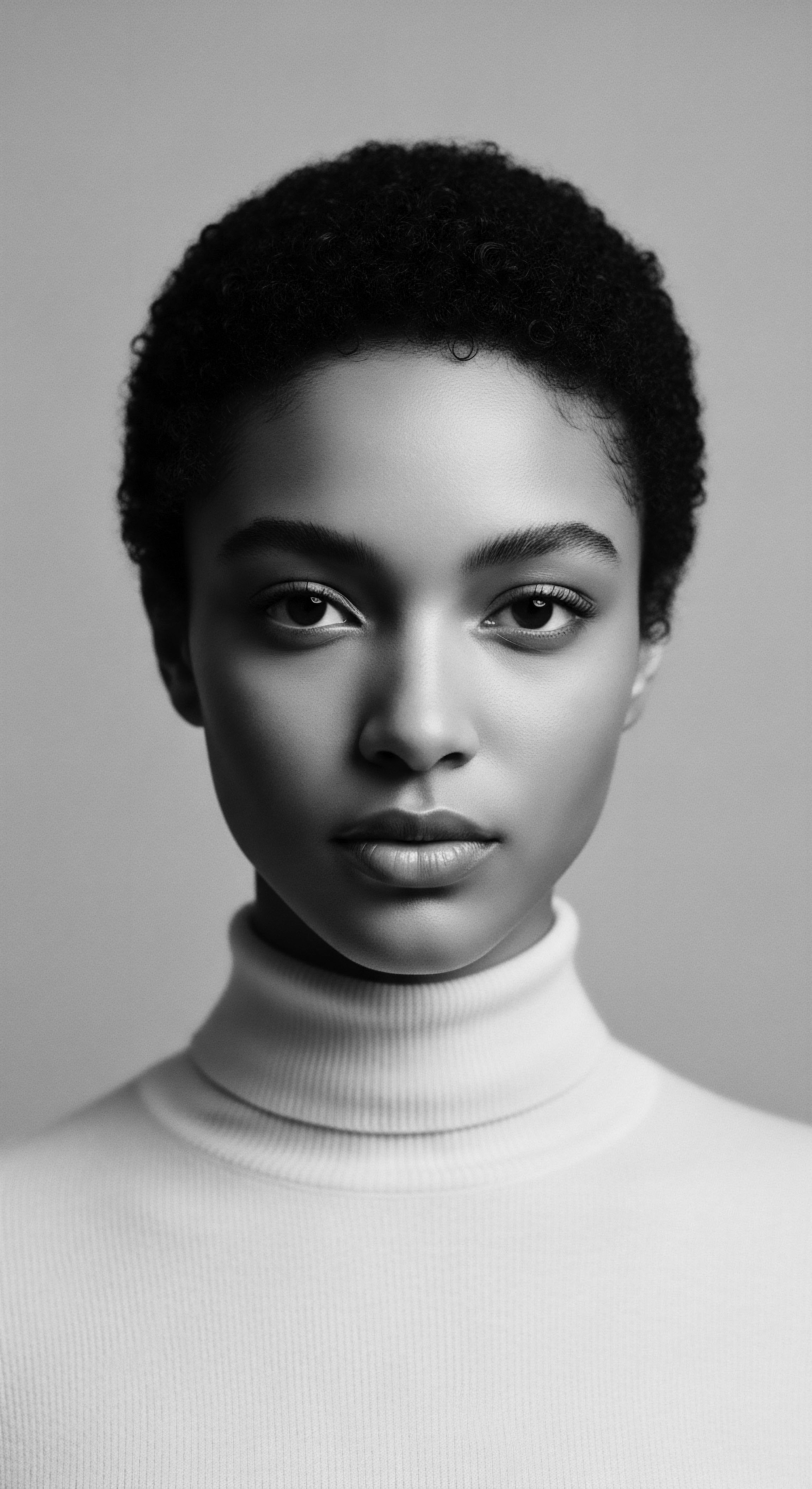
The Language of Oils ❉ Ancestral Lexicons of Lipid Care
Across the African diaspora, the language of hair care has always included a rich lexicon of oils, butters, and emollients. These were not merely cosmetic applications; they were vital components of rituals, communal bonding, and self-preservation. The selection of specific plant-derived lipids for hair care was often guided by centuries of observational knowledge, understanding which substances provided the most tangible benefits for moisture retention, softness, and scalp health. This ancestral wisdom represents an early, sophisticated form of lipid science, albeit one expressed through tradition and practice rather than molecular diagrams.
An intermediate understanding of Lipid Replenishment acknowledges the distinct roles of internal and external lipids in textured hair health, recognizing how ancestral oiling traditions instinctively addressed these needs for centuries.
For instance, the use of Shea Butter (Vitellaria paradoxa), a staple across West Africa, speaks volumes about this deep understanding. Its rich composition of fatty acids, particularly oleic and stearic acids, provides exceptional emollient properties, sealing moisture into the hair shaft and offering a protective barrier against environmental aggressors. Similarly, Palm Oil (Elaeis guineensis), indigenous to West and Central Africa, with its high concentration of saturated and monounsaturated fats, has been traditionally used to nourish and condition hair, imparting a deep luster and softness. These practices were not random; they were deliberate applications of lipid-rich substances chosen for their observable effects on hair vitality and appearance.
| Traditional Lipid Source Shea Butter (Vitellaria paradoxa) |
| Geographical/Cultural Origin West Africa (e.g. Ghana, Burkina Faso, Mali) |
| Primary Hair Benefit (Lipid Replenishment Focus) Deep conditioning, moisture sealing, emollient properties, protection against dryness and breakage due to high fatty acid content. |
| Traditional Lipid Source Palm Oil (Elaeis guineensis) |
| Geographical/Cultural Origin West/Central Africa (e.g. Nigeria, Congo) |
| Primary Hair Benefit (Lipid Replenishment Focus) Nourishment, shine, softening, historically used for scalp health and hair growth due to rich lipid profile. |
| Traditional Lipid Source Coconut Oil (Cocos nucifera) |
| Geographical/Cultural Origin Caribbean, Coastal Africa, Asia |
| Primary Hair Benefit (Lipid Replenishment Focus) Penetrates hair shaft to reduce protein loss, conditioning, adding luster; its medium-chain fatty acids are uniquely structured for hair. |
| Traditional Lipid Source Castor Oil (Ricinus communis) |
| Geographical/Cultural Origin Africa, Caribbean (via diaspora) |
| Primary Hair Benefit (Lipid Replenishment Focus) Thickening, scalp conditioning, often used for edge care and promoting density; its ricinoleic acid is a unique fatty acid. |
| Traditional Lipid Source These ancestral ingredients demonstrate a long-standing intuitive grasp of lipid replenishment for diverse hair needs. |
The application methods were also significant. Warm oil treatments, often performed communally, allowed for deeper penetration of the lipids, enhancing their restorative capabilities. The rhythmic motions of braiding and twisting, often accompanied by the application of oils and butters, served not only as stylistic expressions but also as protective measures, minimizing manipulation and allowing the lipids to coat and shield the strands effectively. This intermediate understanding bridges the gap between the simple concept of adding oil to hair and the nuanced appreciation for the specific types of lipids, their benefits, and the historically informed methods of their application, all intrinsically linked to the cultural heritage of textured hair care.
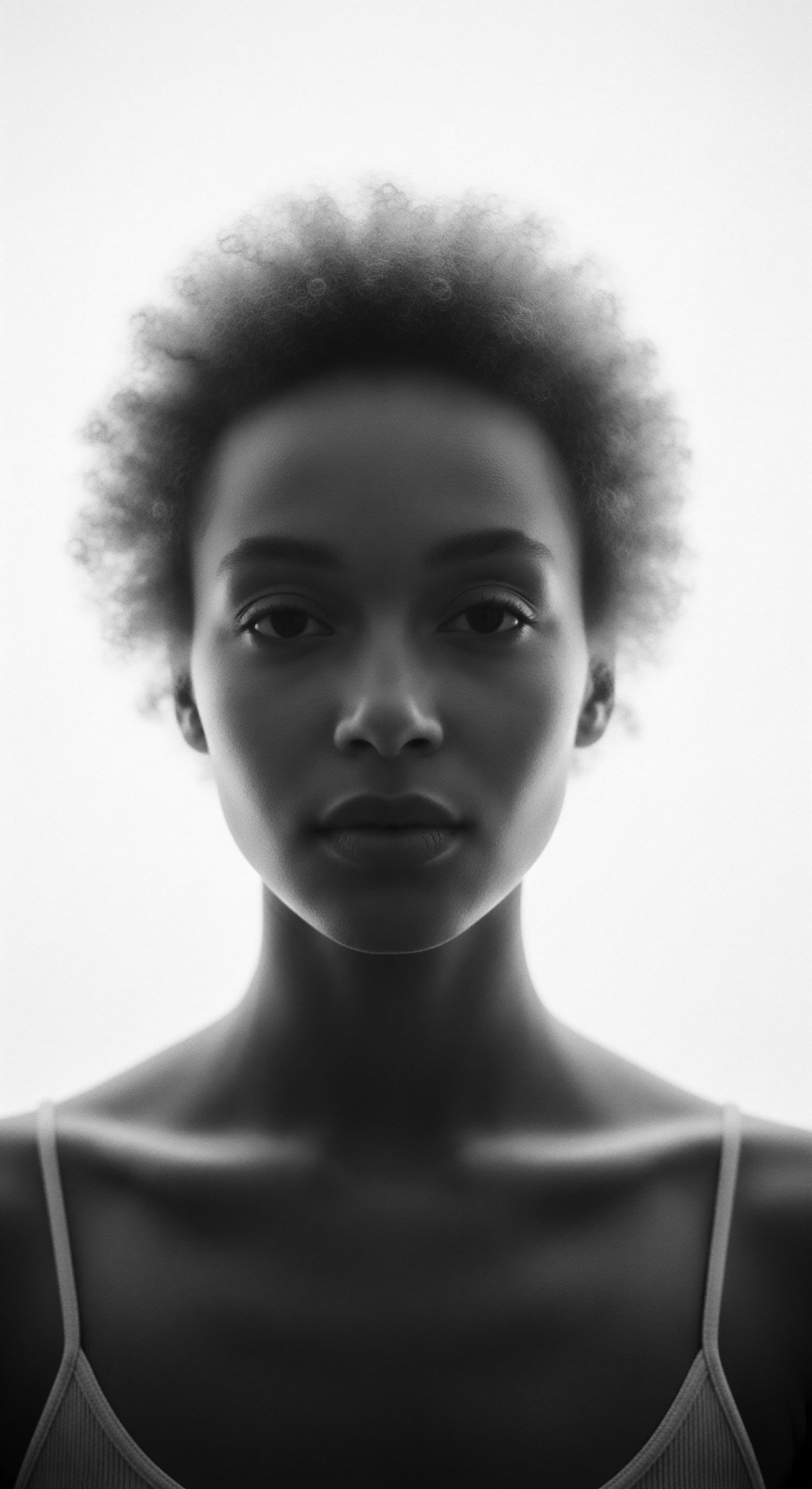
Academic
At an academic stratum, the elucidation of Lipid Replenishment transcends practical application to become a rigorous inquiry into the biochemical intricacies and the profound socio-historical implications for textured hair. This level of analysis demands a granular examination of the hair’s lipidomics, the complex interplay of endogenous and exogenous lipids, and how their disruption impacts the biomechanical properties and aesthetic integrity of diverse hair phenotypes, particularly those of African descent. The meaning of Lipid Replenishment, within this framework, is not merely restoration, but a targeted intervention designed to mitigate the inherent vulnerabilities of highly coiled and tightly curled hair structures, which are predisposed to lipid depletion due to their unique morphology and often higher surface area-to-volume ratio.
The hair fiber’s surface, comprised of the cuticle, is naturally hydrophobic, a property largely conferred by a monolayer of lipids, primarily 18-methyl eicosanoic acid (18-MEA), covalently bonded to the outer cuticle scales. This layer is crucial for maintaining the hair’s natural lubricity, preventing friction, and resisting water absorption. However, textured hair, due to its characteristic twists and turns, experiences differential wear on the cuticle, leading to a non-uniform distribution of this protective lipid layer.
Moreover, common hair care practices, including frequent washing, chemical treatments like relaxers or colorants, and heat styling, systematically strip these vital lipids. The academic pursuit of Lipid Replenishment thus focuses on identifying effective strategies for restoring both the surface lipids and the intercellular lipids (like ceramides and cholesterol) within the cuticle, thereby enhancing mechanical strength, reducing breakage, and improving overall hair health.
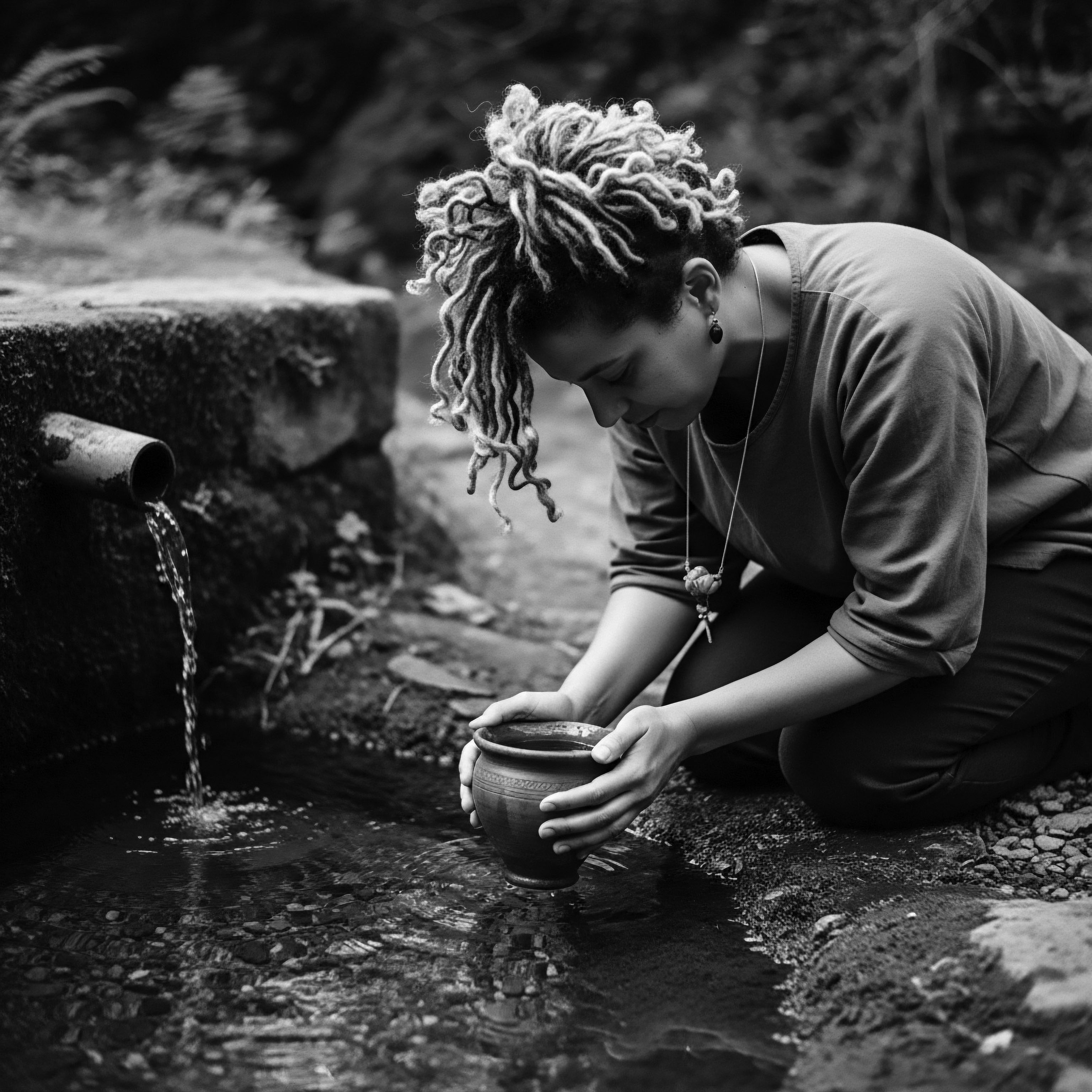
A Legacy of Ingenuity ❉ Lipid Replenishment in the Face of Adversity
The academic lens reveals how the understanding and practice of Lipid Replenishment within Black and mixed-race communities have been shaped not only by biological necessity but also by historical and socio-economic pressures. The resilience of textured hair care traditions, particularly in the context of the transatlantic slave trade and its enduring legacies, provides a compelling case study of adaptive ingenuity. Enslaved Africans, stripped of their cultural identities and traditional resources, nevertheless maintained practices of hair care that implicitly understood the principles of lipid replenishment, often adapting available materials.
Academic inquiry into Lipid Replenishment for textured hair highlights its biochemical complexities and profound socio-historical significance, particularly within communities that adapted ancestral care practices under duress.
Consider the ingenuity of enslaved women who, despite immense hardship, utilized what was available to them—often rendered animal fats, kitchen oils, or indigenous plant extracts found in new environments—to condition and protect their hair. This was not simply about aesthetics; it was a matter of hygiene, scalp health, and maintaining a connection to a lost heritage. A study by Byrd and Tharps (2014) in Hair Story ❉ Untangling the Roots of Black Hair in America details how, even in the harshest conditions, African American women maintained intricate hair care rituals, often involving the application of greases and oils to prevent breakage and manage dryness. This practice, while sometimes misconstrued in later eras, was a direct, albeit rudimentary, form of lipid replenishment, addressing the acute needs of hair subjected to brutal labor and inadequate resources.
The sustained application of various animal fats and vegetable oils, despite their often heavy nature, served as a crucial protective barrier, mitigating the extreme dryness and breakage that textured hair is prone to without proper care. This historical continuity underscores the deep-seated, practical understanding of hair’s lipid needs, even when scientific explanations were centuries away.
Furthermore, the academic exploration delves into the unique challenges faced by textured hair. The helically coiled structure of Afro-textured hair means that natural sebum, which is vital for lipid replenishment, often struggles to traverse the entire length of the hair shaft. This leads to inherent dryness, particularly at the ends, which are the oldest and most vulnerable parts of the hair.
Scientific investigations into the lipid composition of textured hair have shown variations compared to straight hair, with some studies indicating lower levels of certain protective lipids like 18-MEA, especially after chemical processing. This scientific finding validates the historical emphasis on external lipid application within Black hair care traditions.
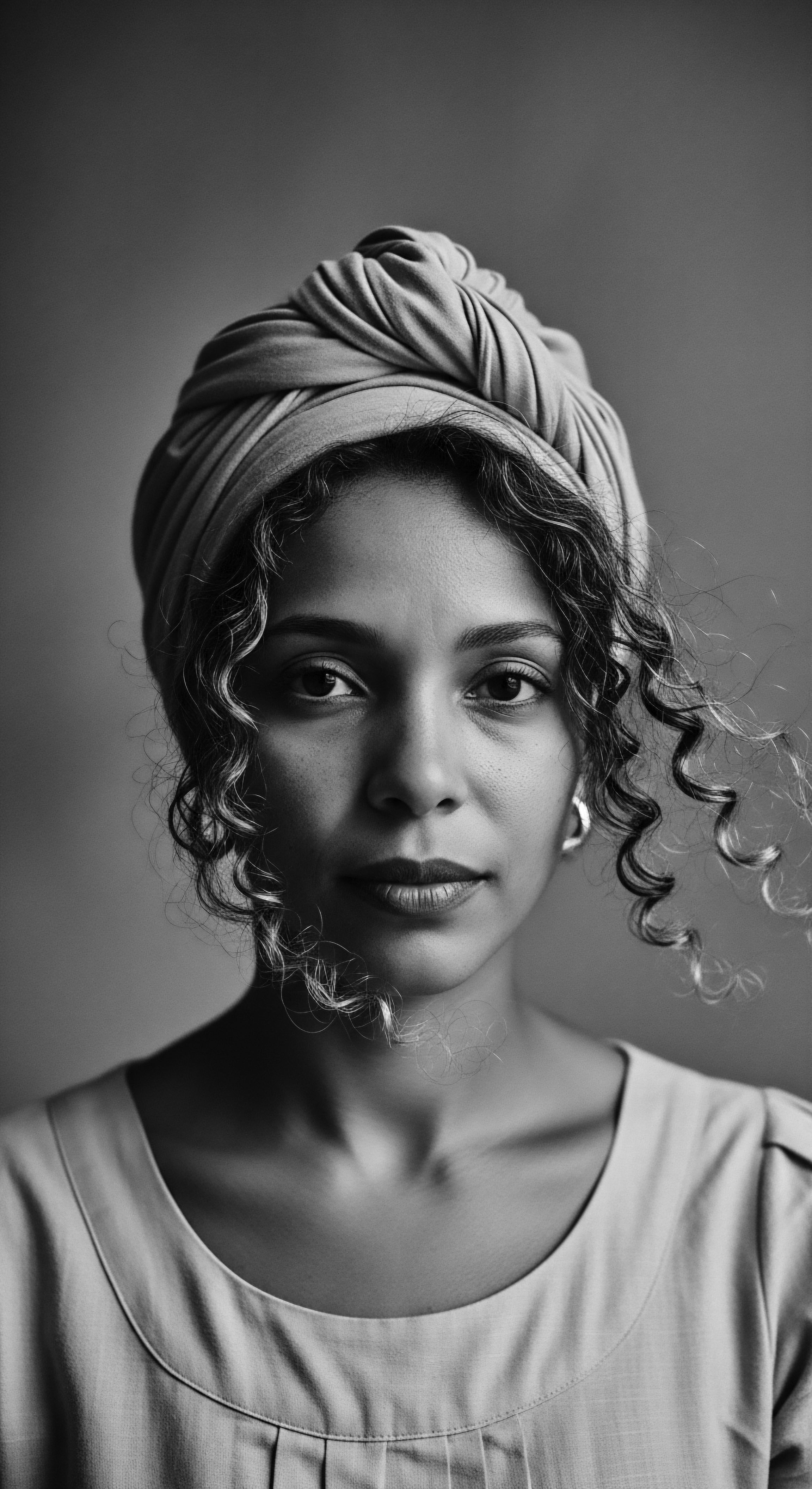
Modern Scientific Approaches and Ancestral Echoes
Contemporary research in lipid replenishment seeks to identify and deliver specific lipid components that mimic or restore the hair’s natural protective barrier. This involves the use of biomimetic ingredients, such as synthetic ceramides, cholesterol, and fatty acids, formulated to integrate seamlessly into the hair structure. The goal is to not only coat the hair but to actively rebuild its lipid matrix, improving its tensile strength, elasticity, and resistance to environmental damage. The advanced understanding of lipid chemistry allows for the precise targeting of specific deficiencies, moving beyond generalized oil applications to scientifically optimized formulations.
Nevertheless, the profound connection to ancestral wisdom remains. Many modern formulations for textured hair still feature ingredients like shea butter, coconut oil, and castor oil, which were staples in traditional care. The academic understanding simply provides the molecular explanation for their long-observed efficacy.
The historical context provides a critical framework for appreciating the enduring relevance of these practices, recognizing them not as mere folk remedies, but as sophisticated, empirical responses to the unique lipid needs of textured hair, honed over generations. The academic pursuit of Lipid Replenishment, therefore, becomes a celebration of both cutting-edge science and the timeless wisdom embedded within cultural hair heritage, offering a holistic, deeply informed perspective on hair vitality.
This rigorous examination also includes the cultural implications of hair oils and greases, which were not just functional but held symbolic weight. The act of oiling hair was often a moment of connection, a tender exchange between mother and child, or a communal ritual of adornment and care. This communal aspect, the shared knowledge of what oils to use and how to apply them, served as a powerful mechanism for transmitting practices of lipid replenishment across generations. The academic lens acknowledges that the efficacy of these practices was not solely biochemical; it was also socio-culturally reinforced, fostering a collective understanding of hair health and beauty that persevered through immense societal shifts.

Reflection on the Heritage of Lipid Replenishment
The journey through the meaning of Lipid Replenishment, from its fundamental biological imperative to its intricate academic dimensions, ultimately brings us back to the heart of Roothea’s ‘Soul of a Strand’ ethos ❉ the enduring legacy of textured hair heritage. This exploration is not merely an intellectual exercise; it is a profound meditation on the wisdom passed down through ancestral hands, the resilience woven into every coil, and the quiet triumph of self-care against a backdrop of historical challenges. The concept of replenishing hair’s vital oils, a seemingly simple act, becomes a resonant echo of generational knowledge, a continuous thread connecting past ingenuity with present understanding.
The oils and butters that once graced the heads of our forebears were more than mere emollients; they were conduits of connection, vessels of tradition, and silent witnesses to stories untold. Each application of shea butter, each anointing with palm oil, carried with it the weight of collective experience, the desire to protect, to nourish, and to celebrate the inherent beauty of hair that defied conventional norms. The wisdom embedded in these practices, often dismissed as anecdotal, finds profound validation in contemporary science, affirming the intuitive genius of those who came before us. This harmonious convergence of ancient practice and modern discovery offers a liberating perspective, allowing us to approach hair care not as a burden, but as a sacred ritual of self-affirmation and a tribute to a rich, unbroken lineage.
As we look to the future of textured hair care, the lessons gleaned from the heritage of Lipid Replenishment serve as a guiding light. They remind us that true hair vitality stems from a deep respect for its natural architecture, a consistent commitment to its nourishment, and an unwavering appreciation for the cultural narratives it embodies. The continuous pursuit of understanding, whether through the microscope or through the whispered stories of grandmothers, empowers us to honor our hair not just as a physical attribute, but as a living archive of identity, strength, and boundless heritage. The future of hair care, then, is not about discarding the old for the new, but about weaving the enduring wisdom of our ancestors with the precision of contemporary knowledge, ensuring that every strand tells a story of replenishment, resilience, and profound beauty.
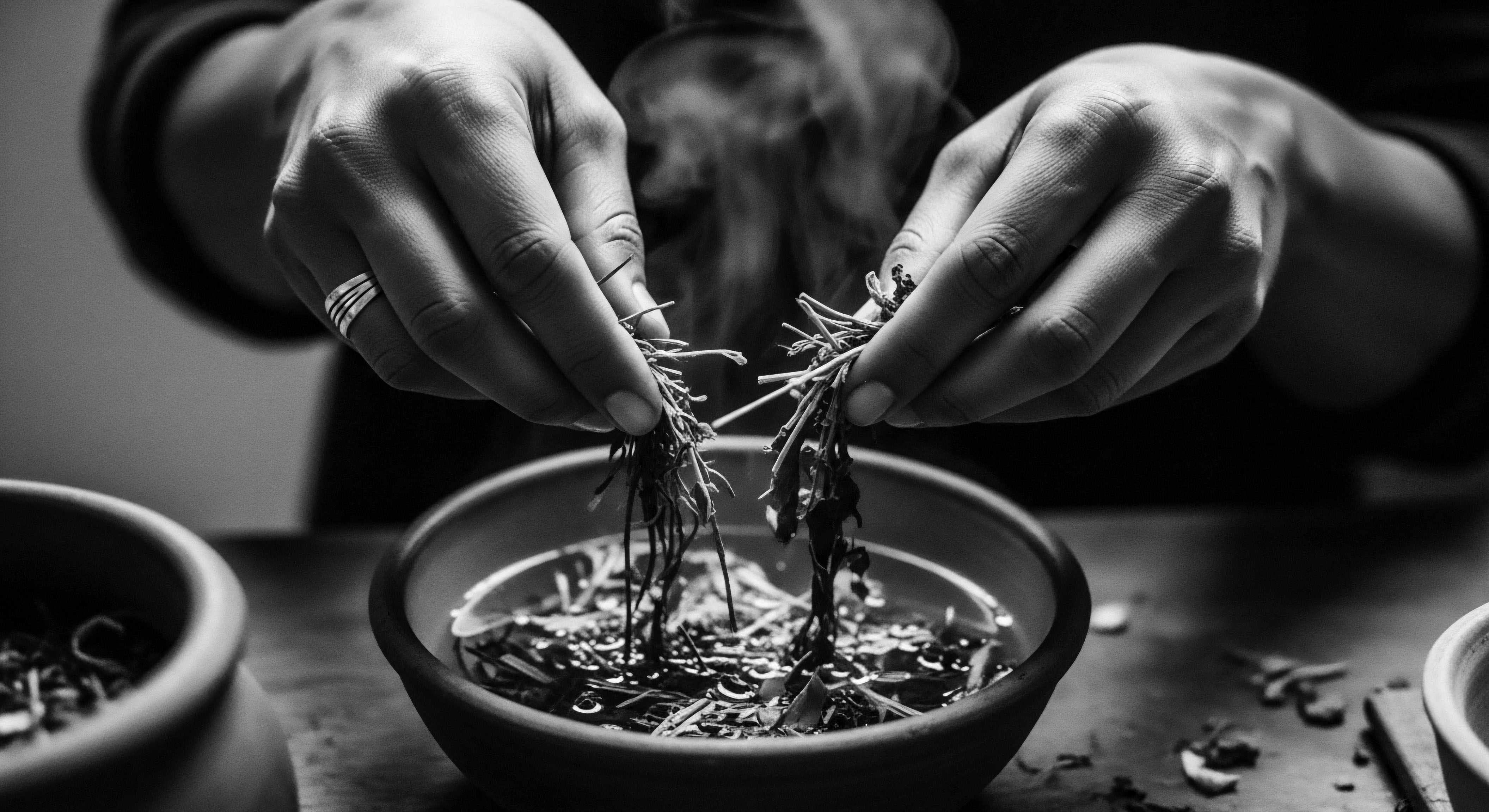
References
- Byrd, A. D. & Tharps, L. D. (2014). Hair Story ❉ Untangling the Roots of Black Hair in America. St. Martin’s Griffin.
- Robbins, C. R. (2012). Chemical and Physical Behavior of Human Hair (5th ed.). Springer.
- Gopinath, H. & Maheswari, K. (2017). Ethnobotany of African Plants ❉ Hair Care and Cosmetics. Nova Science Publishers.
- Draelos, Z. D. (2011). Cosmetic Dermatology ❉ Products and Procedures (2nd ed.). Wiley-Blackwell.
- De La Mettrie, R. et al. (2007). Hair Structure and Chemistry ❉ A Comprehensive Review. Journal of Cosmetic Science.
- Balsam, M. S. & Sagarin, E. (1972). Cosmetics ❉ Science and Technology (2nd ed. Vol. 1). Wiley-Interscience.
- Khumalo, N. P. et al. (2010). African Hair ❉ A Review of Its Structure, Properties, and Common Practices. Journal of the American Academy of Dermatology.
- Dawber, R. P. R. (2002). Diseases of the Hair and Scalp (3rd ed.). Blackwell Science.
